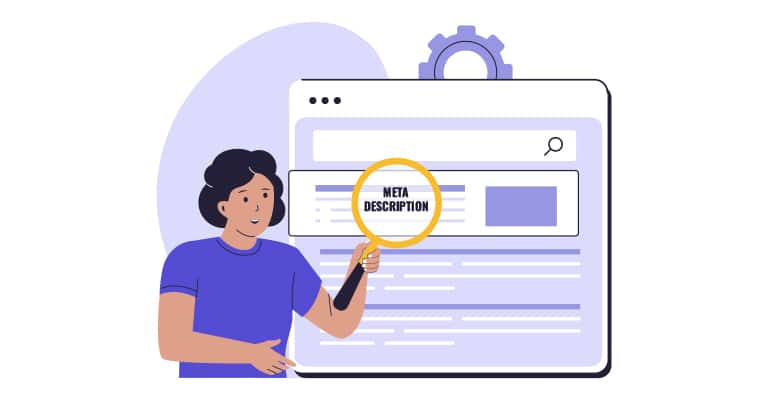In today’s online world, making your website easy to find is crucial, and on-page SEO helps your content rank higher in search results. You need to conduct regular on-page SEO audits to ensure your website works well. This involves reviewing titles, web addresses, content, and internal links to see if they follow search engine rules. These checkups help you fix issues, improve your site, and stay ahead of changes in search engines. Whether you’re an SEO rookie or a seasoned veteran, this guide will show you how to perform an effective on-page SEO audit to boost your website’s ranking and attract more visitors!
What is an On-Page SEO Audit?
An on-page SEO audit is like a checkup for your website. It looks at different parts, like titles, web addresses, content, and links, to make sure they follow search engine rules. The goal is to help your website show up better in search results.
By fixing these things, search engines can understand your site better and rank it higher. An audit shows what needs fixing and gives you steps to make your website work even better. Doing these checkups often helps your site stay strong in the ever-changing online world.
An on-page SEO audit isn’t just about finding mistakes. It’s also about making every part of your site the best it can be. This includes checking if your content makes sense, if you’re using the right words, and if your page descriptions are helpful. Doing this makes your site more attractive to search engines and people.
An on-page SEO audit is your guide to a better website. It’s a key step if you want to improve your site’s rankings and get more visitors.
Why On-Page SEO Audit Matters

On-page SEO is critical because it directly affects how your website appears in search results. If search engines can’t easily crawl and understand your site, it won’t rank well. This can lead to missed opportunities for attracting potential customers or clients.
Conducting an on-page SEO audit helps you identify and fix issues that could be hurting your site’s visibility. It ensures that your content is relevant, your meta tags are optimized, and your internal links are working as they should.
Additionally, an audit helps you stay up-to-date with the latest SEO trends. Search engine algorithms are constantly changing, and what worked last year may not be effective today. Regular audits help you adapt to these changes and keep your site in line with current SEO practices.
An on-page SEO audit is also a proactive approach to improving user experience. When your site is optimized, it loads faster, is easier to navigate, and provides more relevant content to users. This not only helps with rankings but also increases the likelihood of conversions.
Steps to Conduct an On-Page SEO Audit
Analyzing Meta Tags and Descriptions
Meta tags and descriptions are important for on-page SEO. They tell search engines what your page is about. This helps decide how your site shows up in search results. If you do meta tags right, more people might click on your site.
First, look at your title tags. These should be short, have your main keyword, and match what your page is about. Title tags are the first thing people see in search results, so they need to be interesting and clear.
Next, check your meta descriptions. These don’t change your ranking, but they do affect if people click on your link. Meta descriptions should be convincing and explain what people will find on your page. Use action words and a call to action when it makes sense.
By improving your meta tags and descriptions, you can get more people to visit your site. This is an easy but powerful step in any on-page SEO checkup.
How to Optimize Title Tags
Title tags are super important for on-page SEO. Each page should have its own special title tag, and it should include the main keyword at the beginning. Try to keep the title between 50-60 characters long, so it shows up fully in search results.
Your title tag should also be interesting. People should know what the page is about just by reading the title. You can use numbers or ask a question to catch their eye but don’t trick people. The title should match what’s on the page to keep their trust.
Remember, title tags aren’t just for search engines; they’re for people, too. A good title tag can be the reason someone clicks on your link instead of skipping over it.
Crafting Effective Meta Descriptions
Meta descriptions are short bits of text that show up under the title in search results. While they don’t change your ranking, they can make people want to click on your link. A good meta description can help you get more clicks.
When you write meta descriptions, keep them under 160 characters so they show up right in search results. Use action words, and include your main keyword to match what people are searching for.
Your meta description should explain what your page is about in a way that makes people want to click. Don’t be too general. Instead, tell people what makes your page special and why they should visit it.
Adding a call to action like “Learn more,” “Get started,” or “Discover how” can also help get people to click on your link.
Reviewing URL Structures

URLs are often ignored in on-page SEO, but they are very important for how search engines and people see your site. A clean and simple URL can help your site rank higher and make it easier for people to find their way around.
Start by checking the URLs on your site. They should be short, clear, and include important keywords. Don’t use special symbols or too many numbers, as these can make URLs harder to read and remember.
It’s also important to keep your URLs consistent. This means using the same style across your site, like hyphens or underscores, lowercase letters, or certain keywords. Being consistent helps both users and search engines understand your site better.
A well-made URL isn’t just about SEO; it also makes things easier for users. When people can easily understand your URL, they’re more likely to trust your site and click on your content.
Importance of SEO-Friendly URLs
SEO-friendly URLs are essential for both search engines and users. They provide a clear indication of the page’s content and help improve your rankings.
An SEO-friendly URL should be short, descriptive, and include your primary keyword. This not only helps with search engine crawling but also makes the URL more memorable for users.
Avoid using unnecessary words or characters in your URLs. Keep them simple and to the point. A good rule of thumb is to use hyphens to separate words and avoid underscores or spaces.
SEO-friendly URLs also improve the user experience. When users see a clean, descriptive URL, they know what to expect from the page. This increases the likelihood of clicks and conversions.
Best Practices for URL Optimization
URL optimization is a key component of on-page SEO. To optimize your URLs, start by keeping them as short as possible. This not only helps with SEO but also makes them easier to share and remember.
Include your primary keyword in the URL, but avoid keyword stuffing. The goal is to make the URL descriptive and relevant to the page’s content.
Consistency is also important. Use the same format for all your URLs, whether it’s lowercase letters, hyphens, or specific keywords. This helps with both search engine crawling and user experience.
Lastly, avoid using special characters or excessive numbers in your URLs. These can make them harder to read and less user-friendly. Stick to simple, descriptive URLs that accurately reflect the content of your page.
Evaluating Content Quality
In SEO, content is the most important part. Even with good on-page SEO, your site won’t do well without high-quality content. Checking your content’s quality is a key step in an on-page SEO checkup.
Start by making sure your content is useful and interesting to your audience. Good content that helps people or answers their questions will rank higher and bring more visitors. Focus on creating valuable, informative, and engaging content.
Another important thing is where you put your keywords. Your main keywords should show up naturally in your content. Don’t stuff too many keywords in, as this can hurt your ranking and make the content hard to read. Instead, try to fit keywords in smoothly.
Keeping your content fresh is also important. Update your content regularly to keep it current and relevant. Search engines like fresh content, so making updates can help your site rank higher. This could mean adding new info, updating facts, or refreshing examples.
Besides being relevant and fresh, your content should also be well-organized. Use headings, subheadings, bullet points, and short paragraphs to make it easy to read. This not only helps people but also makes it easier for search engines to understand your content.
By checking and improving your content, you create a strong base for good on-page SEO. High-quality content will naturally bring in more visitors, get them engaged, and boost your site’s rankings.
The Role of Keyword Placement
Where you place your keywords in on-page SEO is very important. How you use keywords can affect your website’s ranking a lot. Start by putting your main keyword in key spots like the title, the first 100 words, and in headers.
Spread your keywords evenly throughout the content, but don’t overdo it. Using too many keywords can make your content look like spam, and search engines might punish you for that. Instead, make sure your keywords fit naturally in the text.
Use related keywords and similar words to make your content even more relevant. This helps search engines understand your topic better and can help your site show up in more searches.
Lastly, think about how your content reads when you place keywords. The text should still be easy to read and make sense. If a keyword messes up the flow, adjust it so the content stays smooth. Good keyword placement helps with SEO and makes sure your content is still interesting and easy for readers to enjoy.
Content Relevance and Freshness
Content relevance is about ensuring that your content meets the needs of your audience. It should answer their questions, solve their problems, and provide value. Relevance is key to attracting and retaining visitors, as well as improving your search engine rankings.
To maintain content relevance, regularly review and update your content. Search engines favor fresh content, so adding new information, updating statistics, or revising outdated sections can give your content a boost.
Content freshness also signals to search engines that your website is active and up-to-date. This can improve your rankings and make your content more likely to appear in search results.
Moreover, refreshing your content gives you an opportunity to optimize it for new keywords or trends. As search algorithms evolve, keeping your content fresh ensures that it remains competitive in the ever-changing SEO landscape.
Internal Linking Strategy

An effective internal linking strategy is essential for a well-optimized website. Internal links connect different site pages, helping users and search engines navigate your content. A strong internal linking structure can boost your site’s SEO by distributing link equity and improving crawlability.
Start by identifying the most important pages on your website—these are the pages you want to drive the most traffic to. Then, create internal links from other relevant pages to these key pages. This not only directs users to valuable content but also signals to search engines that these pages are important.
Anchor text plays a crucial role in internal linking. Use descriptive, keyword-rich anchor text that clearly indicates the content of the linked page. Avoid generic phrases like “click here” or “read more,” as these provide little context to search engines.
Internal linking also helps users discover related content on your site. By guiding them to additional resources, you can increase the time they spend on your site and reduce bounce rates. This, in turn, can positively impact your search engine rankings.
A well-thought-out internal linking strategy enhances both user experience and SEO. Connecting related content and directing traffic to key pages can improve your site’s overall performance in search results.
Benefits of a Strong Internal Linking Structure
A good internal linking structure is very helpful for your website. First, it helps search engines find and understand your content more easily. By linking to different pages within your site, you make it easier for search engines to crawl your content.
Second, internal links share SEO value across your site. This means that if one page has strong links from other sites, some of that strength can help other pages on your site rank better, too. Pages that get linked to a lot are seen as more important, which can improve their rankings.
Third, internal links make it easier for visitors to find related content. This keeps them on your site longer and encourages them to check out more pages. The more time people spend on your site, the better your chances of turning them into customers or clients.
Lastly, a good internal linking strategy can lower bounce rates. By giving visitors clear links to more content, you stop them from leaving your site after just one page. Lower bounce rates are a good sign to search engines and can lead to better rankings.
Adding a strong internal linking structure to your on-page SEO checkup is an easy but powerful way to improve both user engagement and how well your site performs in search engines.
How to Optimize Internal Links for SEO
Optimizing internal links for SEO involves more than just adding links to your content. It requires a strategic approach to ensure that the links contribute to both user experience and search engine rankings.
Start by identifying the most relevant pages within your content to link to. These could be related blog posts, product pages, or key service pages. Ensure the links are contextually relevant, as this helps search engines understand the relationship between the pages.
Next, focus on the anchor text you use for your internal links. Anchor text should be descriptive and include relevant keywords when possible. This helps users understand what they’re clicking on and provides valuable context to search engines.
Another important aspect is the placement of internal links. Ideally, you want to include links naturally within the content, especially in the first few paragraphs, where they will likely be noticed. Avoid placing all your links at the end of the page, as users and search engines alike may overlook them.
Finally, regularly review and update your internal links. As you create new content, find opportunities to link back to older posts or pages. This keeps your internal linking structure dynamic and ensures that all relevant content is easily accessible.
Optimizing internal links is a crucial step in any on-page SEO audit. By strategically linking your content, you improve navigation, enhance SEO, and provide a better experience for your users.
Common Mistakes to Avoid in On-Page SEO
Keyword Stuffing
Keyword stuffing is one of the most common mistakes in on-page SEO. While keywords are essential for helping search engines understand your content, using them excessively can do more harm than good. Keyword stuffing can make your content sound unnatural and may even lead to penalties from search engines.
When you overuse keywords, your content becomes difficult to read. This not only frustrates users but also sends negative signals to search engines. They may interpret your content as spammy, leading to lower rankings or removal from search results.
Instead of focusing on keyword density, aim for a natural and conversational tone in your content. Use synonyms and related phrases to avoid repetition, and ensure that your keywords fit seamlessly into the text.
It’s also important to prioritize quality over quantity. A well-written piece of content with fewer keywords will perform better than a keyword-stuffed article that’s hard to read. Remember, the goal is to create content that appeals to search engines and human readers.
In short, avoid keyword stuffing and focus on creating high-quality content that naturally incorporates your target keywords. This approach will improve your rankings and enhance the user experience.
Neglecting Mobile Optimization

In today’s digital landscape, mobile optimization is no longer optional—it’s essential. With the majority of internet traffic now coming from mobile devices, neglecting mobile optimization can severely impact your site’s performance and rankings.
Mobile optimization involves ensuring that your website is responsive and loads quickly on all devices. A responsive design automatically adjusts to different screen sizes, providing a seamless experience for users on smartphones and tablets.
One common mistake is failing to test your site on mobile devices. What looks great on a desktop may not translate well to a smaller screen. Elements like buttons, images, and text should be easily accessible and readable on mobile devices.
Another aspect of mobile optimization is page speed. Mobile users are often on the go, and they expect fast loading times. If your site takes too long to load, users are likely to bounce, which can negatively affect your rankings. Use tools like Google’s PageSpeed Insights to identify and fix issues that may be slowing down your site.
Finally, consider mobile user experience when designing your site. Navigation should be intuitive, with clear menus and easily clickable links. Avoid using pop-ups or other intrusive elements that can frustrate mobile users.
Incorporating mobile optimization into your on-page SEO audit ensures that your site is accessible and user-friendly on all devices. This not only improves user experience but also boosts your search engine rankings.
Final Checklist for On-Page SEO Audit
Essential Elements to Review
As you wrap up your on-page SEO audit, it’s important to review all the key elements that contribute to your site’s performance. This final checklist will help ensure that you haven’t overlooked any critical areas.
Start with your meta tags, including title tags and meta descriptions. Make sure they are optimized with relevant keywords and accurately reflect the content of each page. Double-check that your title tags are within the recommended length of 50-60 characters and that your meta descriptions are under 160 characters.
Next, review your URL structures. Ensure that all URLs are clean, concise, and SEO-friendly. Avoid special characters and excessive numbers, and include your primary keyword when possible.
Content quality is another essential element to review. Evaluate the relevance, freshness, and keyword placement of your content. Make sure your content is well-structured with clear headings, short paragraphs, and bullet points where appropriate.
Don’t forget to check your internal linking structure. Ensure that important pages are linked from relevant content, and that the anchor text is descriptive and keyword-rich. Also, make sure your links are working correctly and directing users to the right pages.
Finally, review your site’s mobile optimization. Test your site on various devices to ensure it’s responsive and loads quickly. Make sure the user experience is seamless, with easy navigation and accessible content.
By following this final checklist, you can ensure that your on-page SEO audit is thorough and effective. This will help improve your site’s performance and boost your search engine rankings.
Tools to Use for an On-Page SEO Audit
Conducting an on-page SEO audit can be a complex process, but there are several tools available that can simplify the task. These tools can help you identify issues, optimize your site, and track your progress.
One of the most popular tools is Google Search Console. It provides insights into how your site is performing in search results and identifies issues like broken links, crawl errors, and mobile usability problems. You can also use it to monitor your site’s search traffic and optimize your content accordingly.
Another valuable tool is SEMrush. This comprehensive SEO tool offers a range of features for on-page SEO audits, including keyword research, backlink analysis, and content optimization. SEMrush can also help you track your rankings and monitor your competitors.
For technical SEO audits, Screaming Frog is an excellent choice. This tool crawls your website and provides detailed reports on issues like duplicate content, missing meta tags, and slow-loading pages. It’s especially useful for large sites with many pages.
Ahrefs is another powerful tool for on-page SEO. It offers a site audit feature that identifies common SEO issues and provides recommendations for improvement. Ahrefs also has a robust keyword research tool that can help you optimize your content for better rankings.
Finally, use tools like Yoast SEO if you’re working with WordPress. Yoast provides real-time feedback on your content’s SEO performance, helping you optimize meta tags, keywords, and readability.
By using these tools, you can streamline your on-page SEO audit and ensure that your site is fully optimized for search engines. These tools offer valuable insights and actionable recommendations that can significantly improve your site’s performance.
Closing Thoughts on On-Page SEO Audits
An on-page SEO audit is essential for improving your website’s search engine results performance. Regularly reviewing and optimizing elements like meta tags, URL structures, content quality, and internal links can boost your site’s visibility and user experience. Regular audits keep your website competitive, helping you address issues, optimize for new keywords, and stay current with trends. The goal is to create a website that search engines and users love, leading to higher rankings, more traffic, and success online. Start your audit today to make your website more successful and visible.




